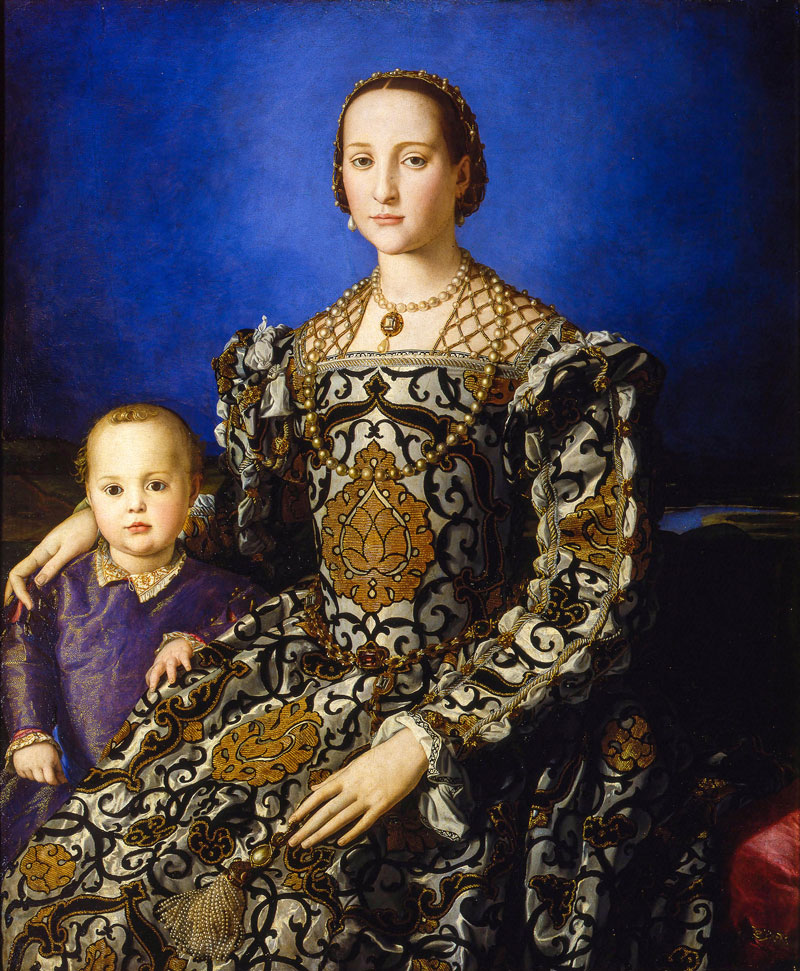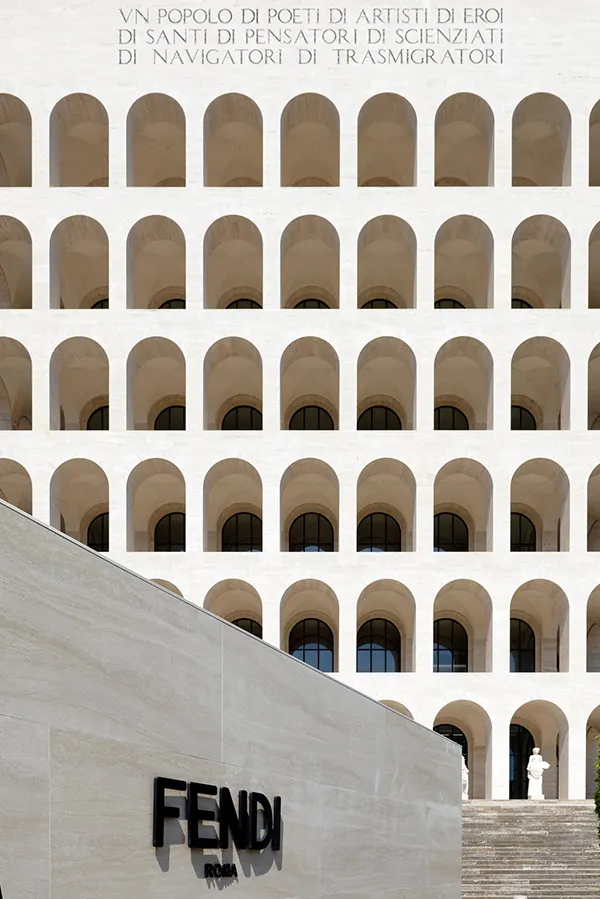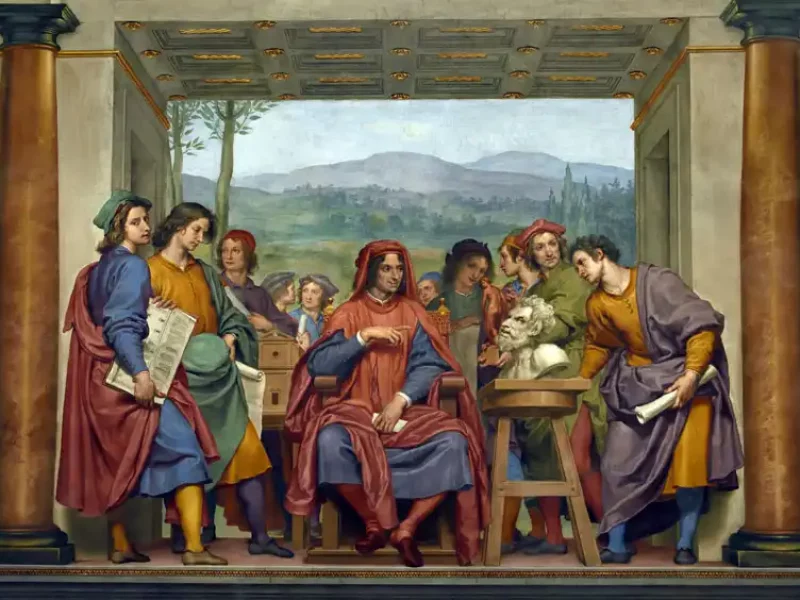
A fresco depicting Lorenzo di Medici surrounded by artists, an ode to his great patronage of arts and culture.
The Medici Family
Italy is a country that can be examined through all sorts of lenses; you can trace Italian history through art, through food and wine or travel and tourism. Italian industry gave the world its finest sportscars and belliSSIMO design, historic cinema and fashion. Just one of these ItalianISSIMO categories can provide ample inspiration and centuries of expertise and we have them all to enjoy – loving Italy means experiencing an abundance of excellence! There is one concept that unites each area of Italian distinction: family. A unifying force in Italian culture, the family is the centrepoint to all things Italian. And the history of these talents and businesses is no different. We’re discovering five notable families and their superlative contributions to Italian culture.
One of the oldest dynasties in Italy, the Medici family has been associated with politics, the Papal office and the Italian banking world since the Renaissance. As patrons of the arts and devotees of humanistic ideals, they even played important roles in bringing about the Renaissance that shaped the history of thought and art that we still experience today.
At the height of their power, this was the wealthiest family in Europe. The Medici Bank was a stronghold from the 14th Century, creating the affluence that enabled their political power and investment into the arts. WIth origins in Siena, their ascent throughout Tuscany culminated in the leadership of Florence by Lorenzo de Medici – Lorenzo the Magnificent – a magnanimous ruler who sponsored Botticelli and Michelangelo and heralded in the Golden Age of the illustrious city. Four Popes – Pope Leo X, Pope Clement VII, Pope Pius IV and Pope Leo XI all descend from this illustrious family. Their shared history is responsible for funding some of most important buildings and art collections in the country (including Santa Maria del Fiore in Florence and San Pietro Basilica in Rome) and acting as patrons to the minds that shaped Italy’s – and the world’s – history: Galileo, Machiavelli, Leonardo da Vinci and more. Italian history is intertwined with the legacy of the Medici family.
The Agnelli Family
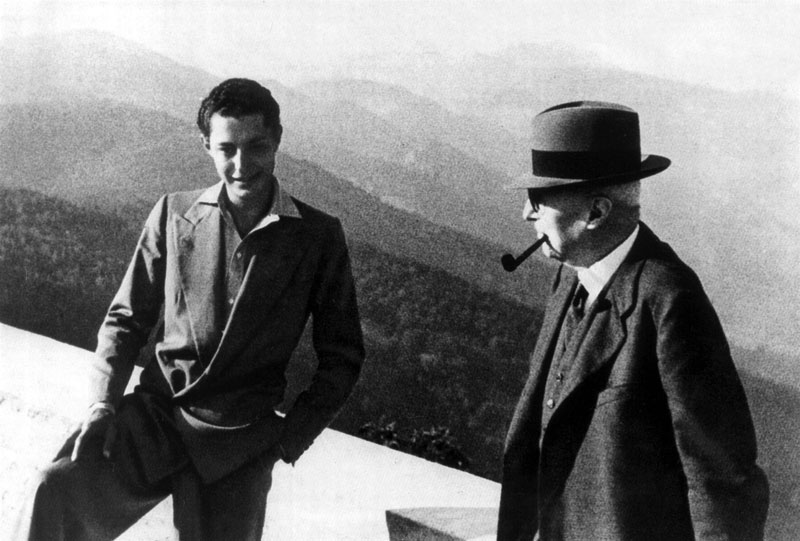
A young Gianni Agnelli and his grandfather, founder of FIAT Giovanni Agnelli
Fast forwarding a couple of centuries introduces us to another family who shaped the course of Italian history and this country’s economy. In 1899, patriarch Giovanni Agnelli founded Fiat – Fabbrica Italiana Automobili di Torino. The car manufacturer is not just the largest in Italy, but in Europe, employing over one hundred thousand Italians at its peak. During this era, Fiat was overseen by Giovanni’s grandson – Gianni Agnell and this massive workforce designed and assembled over 1.4 million cars in the 1970s. Not without controversy, Gianni Agnelli oversaw the profitability of a family-owned company that ultimately accounted for over 4% of the entire country’s GDP and the Agnelli family still controls (or owns significant shares in) some of Italy’s most lauded brands and institutions from media (La Stampa , Torino’s newspaper and The Economist) to sports (the Juventus football club) and of course; cars including Alfa Romeo, Chrysler, Jeep, Maserati and many more.
The Fendi Family
You’ve seen their insignia on handbags for decades but the Fendi family has contributed far more to fashion and Italy than their famous baguette bag. Founded in Via del Plebiscito in Rome in 1925, this is a true family business. Parents Adele and Edoardo Fendi supervised the success of their leather and fur shop, expanding to new retail locations and building their family at the same time. Cementing their reputation for Italian luxury, the second generation of the Fendi dynasty were the couple’s children; five sisters who all worked in the stores and took the reins of the business after the passing of their father. Under Carla Fendi’s supervision, the company and brand expanded into the eponymous Italian fashion juggernaut we know today. It was Carla who took a chance on a young fashion designer by the name of Karl Lagerfeld, who helped shape the growing brand and transformed chicISSIMO Italian designs into Hollywood cool in the 1960s. In the 1980s, Rome’s Police Department turned to the fashion group to design their uniforms and in the nineties, Silvia Venturini Fendi started a handbag revolution when she designed the aforementioned baguette bag which was quickly carried by the decade’s most notable stars in Italy and around the world. The multi-generational family still plays a hands-on role in the design and business of the company their grandparents created.
Like other notable Italian families, Carla Fendi and her family were not just invested in business, but the arts and philanthropy as well. They funded the restoration of the Trevi Fountain – and then, aided by a plexiglass catwalk, held a fashion show to celebrate the company’s 90th anniversary on the fountain itself. In 2021, the restoration of Rome’s largest ancient building – the Temple of Venus – was completed, funded by the Fendi Group.
The Tasca d’Almerita Family
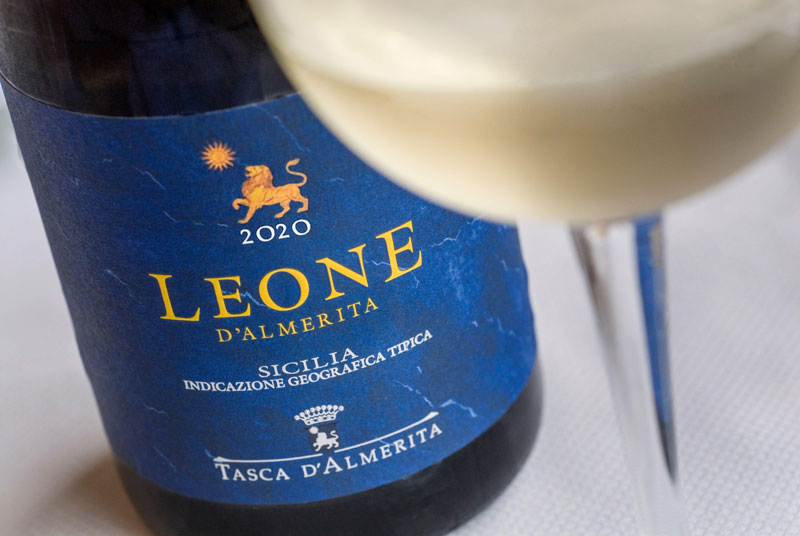
Sicilian wine Family Tasca D’Almerita
Traveling from Rome to Sicily, we turn from fashion to another mainstay of Italian excellence: wine. In 1830, brothers Lucio and Carmelo Mastrogiovanni Tasca purchased 1200 hectares of land in the province, inaugurating the history of Sicily as an important wine region and creating an agricultural turning point in Italy. From their founding in the nineteenth century, the Tasca d’Almerita family’s practices changed the way land was used and wine was made. The brothers planted vineyards that are among the most revered by the global wine community, but they also began growing grains and cultivating a variety of produce to ensure the land was diverse and the communities well taken care of.
At the turn of the twentieth century, the family added to its portfolio of wines by creating the now famous Camastra blend, the first that won international recognition for the Silician winemakers. Fifty years later, they planted new vineyards and soared to even greater acclaim with their Regaleali White wine. Over the course of almost two centuries, the wineries remained under the stewardship of the family who have carefully shaped the Sicilian wine tradition and industry with their research and ideas. Theirs was the winery that Richard Wagner walked through while he composed famous works! Now run by Lucio Tasca d’Almerita alongside his sons Giuseppe and Alberto, they oversee the production of three million bottles annually and export to four continents where they enjoy name-brand recognition amongst discerning wine drinkers throughout the globe. Alberto also created and acts as president of SOStain – a sustainable wine project developed by the Italian Ministry for the Environment and Sea to promote better winegrowing practices. From a tradition dating back almost two hundred years, the Tasca d’Almerita family has shaped the Sicilian wine industry.
The Sciò Family

The Sciò family outside their La Posta Vecchia, in Palo Laziale
ince leisure travel began amongst the traditions of a European Grand Tour, Italy has been a destination artists, thinkers and holiday-makers have flocked to. Italians are known throughout the world for their hospitality; gathering people around the table over buonISSIMO cuisine and creating a home away from home. Between Italian hospitality and the world’s desire for Italy, it is no wonder that the business of hotels is an important part of the history of il bel paese. And there is no hotel group closer to our hearts than the Pellicano Group, owned by the Sciò Family.
Each of the three seaside hotels – Hotel Il Pellicano in Monte Argentario, La Posta Vecchia, on the coast 35 minutes outside of Rome, and Mezzatorre on the island of Ischia – have storied histories that the Sciòs have acted as stewards for, preserving the memories and Italian heritage of each location. When the original owners the Grahams sold the Pellicano in the seventies, patriarch Roberto Sciò wanted to ensure that the Dolce Vita heyday of the beloved hotel was respected. It is his daughter, and ISSIMO Creative Director, Marie Louise Sciò that supervises all aspects of running the hotels today, from the impeccable welcome international guests receive in Porto Ercole at Pellicano, to the storied parties thrown at La Posta Vecchia to international fashion shows that take place under the ancient tower of Mezzatorre.
To ask anyone what comes to mind when they think of Italy, you will likely hear about Renaissance art, about dazzling fashion runways, superlative wines, and the mechanical engineering craftsmanship that created some of the best cars in the world. And of course; of impeccable hospitality and glorious seaside vacations. From patrons of the arts to titans of industry, agricultural gamechangers and fashion tastemakers, Italian families have shaped the history of the country, not just within its borders but in the minds of people around the world
